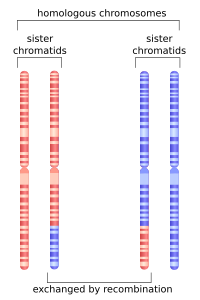
Chemical Approach to Biological Safety: Molecular‐Level Control of an Integrated Zinc Finger Nuclease
Sign Up to like & getrecommendations! Published in 2018 at "ChemBioChem"
DOI: 10.1002/cbic.201700420
Abstract: Application of artificial nucleases (ANs) in genome editing is still hindered by their cytotoxicity related to off‐target cleavages. This problem can be targeted by regulation of the nuclease domain. Here, we provide an experimental survey… read more here.
Keywords: zinc finger; nuclease; integrated zinc; approach ... See more keywords

Single-strand specific nuclease enhances accuracy of error-corrected sequencing and improves rare mutation-detection sensitivity.
Sign Up to like & getrecommendations! Published in 2021 at "Archives of toxicology"
DOI: 10.1007/s00204-021-03185-y
Abstract: Error-corrected sequences (ECSs) that utilize double-stranded DNA sequences are useful in detecting mutagen-induced mutations. However, relatively higher frequencies of G:C > T:A (1 × 10-7 bp) and G:C > C:G (2 × 10-7 bp) errors decrease the accuracy of detection of rare G:C mutations (approximately… read more here.
Keywords: detection; error corrected; nuclease; mutation detection ... See more keywords

Target invasion-triggered signal amplification based on duplex-specific nuclease for selective and sensitive detection of miRNAs.
Sign Up to like & getrecommendations! Published in 2022 at "Analytica chimica acta"
DOI: 10.1016/j.aca.2021.339182
Abstract: Dysregulation of MicroRNAs (miRNAs) cause various diseases in humans, and developing reliable methods to detect miRNAs is critical for molecular diagnostics and personalized medicine. This study developed a toehold-mediated target invasion combined with duplex-specificity nuclease… read more here.
Keywords: detection; target invasion; target; nuclease ... See more keywords

Sequence Reversal Prevents Chain Collapse and Yields Heat-Sensitive Intrinsic Disorder.
Sign Up to like & getrecommendations! Published in 2018 at "Biophysical journal"
DOI: 10.1016/j.bpj.2018.06.006
Abstract: Sequence patterns of charge, hydrophobicity, hydrogen bonding, and other amino acid physicochemical properties contribute to mechanisms of protein folding, but how sequence composition and patterns influence the conformational dynamics of the denatured state ensemble is… read more here.
Keywords: collapse; temperature; nuclease; spectroscopy ... See more keywords

Copper(II) complexes of N3O tripodal ligands appended with pyrene and polyamine groups: Anti-proliferative and nuclease activities.
Sign Up to like & getrecommendations! Published in 2018 at "Journal of inorganic biochemistry"
DOI: 10.1016/j.jinorgbio.2017.11.006
Abstract: A series of tripodal ligands based on the 2-tert-butyl-4-R-6-phenol was synthesized, where R=aldehyde (HL1), R=putrescine-pyrene (HL2) and R=putrescine (HL3). A dinucleating ligand wherein a putrescine group connects two tripodal moieties was also prepared (H2L4). The… read more here.
Keywords: copper complexes; complexes n3o; nuclease; tripodal ligands ... See more keywords

The SMX DNA Repair Tri-nuclease
Sign Up to like & getrecommendations! Published in 2017 at "Molecular Cell"
DOI: 10.1016/j.molcel.2017.01.031
Abstract: Summary The efficient removal of replication and recombination intermediates is essential for the maintenance of genome stability. Resolution of these potentially toxic structures requires the MUS81-EME1 endonuclease, which is activated at prometaphase by formation of… read more here.
Keywords: mus81 eme1; dna repair; tri nuclease; smx ... See more keywords

If You'd Like to Stop a Type III CRISPR Ribonuclease, Then You Should Put a Ring (Nuclease) on It.
Sign Up to like & getrecommendations! Published in 2018 at "Molecular cell"
DOI: 10.1016/j.molcel.2018.10.048
Abstract: Athukoralage et al. (2018) identify a new class of nuclease that degrades cyclic oligoadenylate (cOA), a second messenger that activates non-specific RNA degradation by the type III CRISPR-Cas accessory RNase Csm6/Csx1. This discovery provides a mechanism… read more here.
Keywords: nuclease; iii crispr; type iii;

A universal fluorescence-based toolkit for real-time quantification of DNA and RNA nuclease activity
Sign Up to like & getrecommendations! Published in 2019 at "Scientific Reports"
DOI: 10.1038/s41598-019-45356-z
Abstract: DNA and RNA nucleases play a critical role in a growing number of cellular processes ranging from DNA repair to immune surveillance. Nevertheless, many nucleases have unknown or poorly characterized activities. Elucidating nuclease substrate specificities… read more here.
Keywords: real time; dna; fluorescence based; nuclease ... See more keywords

Optimizing a production strategy for a nonspecific nuclease from Yersinia enterocolitica subsp. palearctica in genetically engineered Escherichia coli.
Sign Up to like & getrecommendations! Published in 2019 at "FEMS microbiology letters"
DOI: 10.1093/femsle/fnz208
Abstract: A nuclease from Yersinia enterocolitica subsp. palearctica (Nucyep) is a newly found thermostable nonspecific nuclease. The heat-resisting ability of this nuclease would be extremely useful in biological research or pharmaceutical production. However, the application of… read more here.
Keywords: genetically engineered; production; nuclease yersinia; coli ... See more keywords

Genome editing in mammalian cells using the CRISPR type I-D nuclease
Sign Up to like & getrecommendations! Published in 2021 at "Nucleic Acids Research"
DOI: 10.1093/nar/gkab348
Abstract: Abstract Adoption of CRISPR–Cas systems, such as CRISPR–Cas9 and CRISPR–Cas12a, has revolutionized genome engineering in recent years; however, application of genome editing with CRISPR type I—the most abundant CRISPR system in bacteria—remains less developed. Type… read more here.
Keywords: genome editing; crispr; crispr cas; nuclease ... See more keywords

The RecB helicase-nuclease tether mediates Chi hotspot control of RecBCD enzyme
Sign Up to like & getrecommendations! Published in 2019 at "Nucleic Acids Research"
DOI: 10.1093/nar/gky1132
Abstract: Abstract In bacteria, repair of DNA double-strand breaks uses a highly conserved helicase–nuclease complex to unwind DNA from a broken end and cut it at specific DNA sequences called Chi. In Escherichia coli the RecBCD… read more here.
Keywords: control recbcd; helicase nuclease; nuclease; recbcd enzyme ... See more keywords